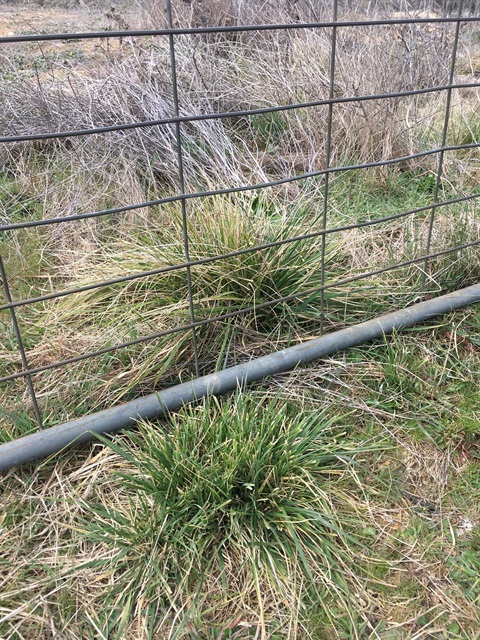
Welcome to the next instalment of Weed of the Week for the 2023/24 spring and summer season. Through this series of articles, Council is providing the Snowy Monaro community with information and advice on new, emerging and established invasive plant species threatening our region.
Whether you're living on the land, living in town, or just passing through – we all have a part to play in protecting our natural environment and agricultural land from invasive plants and weeds.
This week we're focusing on Chilean needle grass.
Chilean needle grass is a perennial grassy weed, closely related to serrated tussock. It is renowned for both its insidious nature and its ability to invade native and introduced pastures. Being so difficult to detect and identify, this highly invasive species can often go unnoticed in pastures for many years before it is detected.
Chilean needle grass is most distinctive during late winter with its winter green growth and frosted tips. As spring pasture growth returns, it blends in amongst other vegetation and becomes very difficult to identify until seeds develop in the warmer months.
In the Snowy Monaro region, it is most commonly found in the northern localities of Michelago, Smiths Road and Anembo – with an established presence in the Bombala area. In addition to these known problem areas, infestations have been recorded more broadly across the region.
Chilean needle grass has been present in southeast NSW for over 50 years, and is widespread and prolific in many areas to the north of the Snowy Monaro. Owing to this close proximity, the movement of stock, vehicles and other equipment poses a particular threat to the spread of this weed in our region.
As the name suggests, Chilean needle grass (Nassella neesiana) is native to Chile and other parts of South America. In Australia, it is recognised as a Weed of National Significance due its potential to invade and dominate natural ecosystems.
Why Chilean needle grass is a problem:
It is highly invasive, producing both conventional seed heads as well as stem seeds at nodes under the leaf sheath. Seeds remain viable in the ground for many years. This persistent seed bank makes Chilean needle grass extremely difficult to control.
Chilean needle grass exhibits similar characteristics to other local grass species, in particular fescue. When kept short and fresh it is quite palatable and often preferentially grazed by livestock and native animals, making it very difficult to identify in pastures until large patches appear.
Left unchecked, it can out-compete and dominate both native vegetation and improved pastures, reducing biodiversity. This is compounded by the hardiness of the species, with adult plants long-lived and able to withstand even the toughest of conditions.
The sharp, corkscrew-like seeds have the potential to injure the eyes of animals and can cause carcase damage in a grazing situation. Seeds are readily dispersed in fodder and on animals, vehicles, and machinery.
What you can do:
- With all weeds, prevention is the best control option. Maintaining a vigorous perennial ground cover at all times will inhibit establishment of Chilean needle grass.
- Don't panic if you identify Chilean needle grass on your property. It can be managed.
- Identification is key – learn how to identify Chilean needle grass and understand best management practices.
- Contact Council if you find suspected Chilean needle grass on your land. Council's biosecurity team provide a free onsite weed identification and advisory service.
- Control incursions on your land swiftly, particularly in your high quality grasslands. The likelihood of eliminating this weed once established is very slim.
- Control options include crop rotation, pasture management, herbicide application and strategic grazing.
- Control plants before they set seed – this will reduce the likelihood of further infestations from establishing.
- Manage livestock grazing carefully during the summer months when plants may be seeding.
- Limit livestock and vehicle movements between infested paddocks and clean paddocks.
- Avoid purchasing fodder from areas with known Chilean needle grass infestations.
Council is here to help. If you have questions about Chilean needle grass, or any other weeds – contact our specialist biosecurity officers for advice and assistance.






